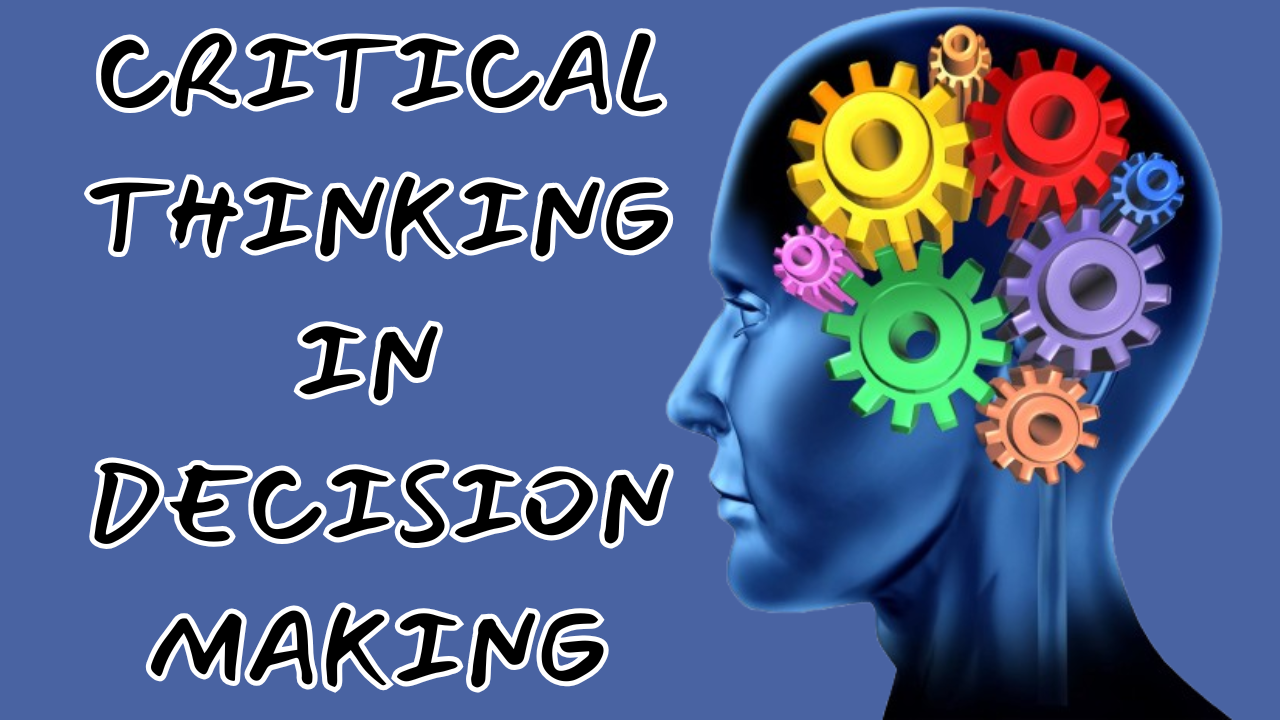Every day, a sea of decisions stretches before us. Some are small and unimportant, but others have a larger impact on our lives. For example, which politician should I vote for? Should I try the latest diet craze? Or will email make me a millionaire? We’re bombarded with so many decisions that it’s impossible to make a perfect choice every time. But there are many ways to improve our chances, and one particularly effective technique is critical thinking.
What is Critical Thinking?
Critical thinking is a way of approaching a question that allows us to carefully deconstruct a situation, reveal its hidden issues such as bias and manipulation, and make the best decision. Rather than choosing an answer because it feels right, a person who uses critical thinking subjects all available options to scrutiny and skepticism. Using the tools at their disposal, they’ll eliminate everything but the most useful and reliable information.
The Five-Step Process of Critical Thinking
Here’s one five-step process that may help you solve any number of problems:
Formulate Your Question:
Know what you’re looking for. This isn’t always straightforward. For example, if you’re deciding whether to try out the newest diet craze, your reasons for doing so may be obscured by other factors, like claims that you’ll see results in just two weeks. But if you approach the situation with a clear view of what you’re actually trying to accomplish by dieting, whether that’s weight loss, better nutrition, or having more energy, that’ll equip you to sift through this information critically and decide whether the new fad really suits your needs.
Gather Your Information:
There’s lots of it out there, so having a clear idea of your question will help you determine what’s relevant. If you’re trying to decide on a diet to improve your nutrition, you may ask an expert for their advice or seek other people’s testimonies. Information gathering helps you weigh different options, moving you closer to a decision that meets your goal.
Apply the Information:
This involves asking critical questions. Facing a decision, ask yourself, “What concepts are at work?” “What assumptions exist?” “Is my interpretation of the information logically sound?” For example, in an email that promises you millions, consider, “What is shaping my approach to this situation?” “Do I assume the sender is telling the truth?” “Based on the evidence, is it logical to assume I’ll win any money?”
- Consider the Implications: Imagine it’s election time, and you’ve selected a political candidate based on their promise to make it cheaper for drivers to fill up on gas. At first glance, that seems great. But what about the long-term environmental effects? If gasoline use is less restricted by cost, this could also cause a huge surge in air pollution, an unintended consequence that’s important to think about.
- Explore Other Points of View: Ask yourself why so many people are drawn to the policies of the opposing political candidate. Even if you disagree with everything that candidate says, exploring the full spectrum of viewpoints might explain why some policies that don’t seem valid to you appeal to others. This will allow you to explore alternatives, evaluate your own choices, and ultimately help you make more informed decisions.
Conclusion
This five-step process is just one tool, and it certainly won’t eradicate difficult decisions from our lives. But it can help us increase the number of positive choices we make. Critical thinking can give us the tools to sift through a sea of information and find what we’re looking for. And if enough of us use it, it has the power to make the world a more reasonable place.
FAQs
- What is critical thinking?
- Critical thinking is a method of evaluating information and arguments in a structured and logical way, allowing us to make better decisions by eliminating bias and focusing on reliable information.
- Why is critical thinking important?
- It helps us make more informed decisions, improves problem-solving skills, and reduces the likelihood of being influenced by biases and manipulations.
- What are the steps involved in critical thinking?
- The five steps are: Formulate Your Question, Gather Your Information, Apply the Information, Consider the Implications, and Explore Other Points of View.
- How can critical thinking improve decision making?
- By providing a structured approach to evaluating options, critical thinking helps in making decisions that are logical, well-informed, and aligned with long-term goals.
- What is the impact of exploring other points of view in critical thinking?
- Exploring other points of view allows us to understand different perspectives, evaluate our own choices more thoroughly, and make more balanced and informed decisions.
